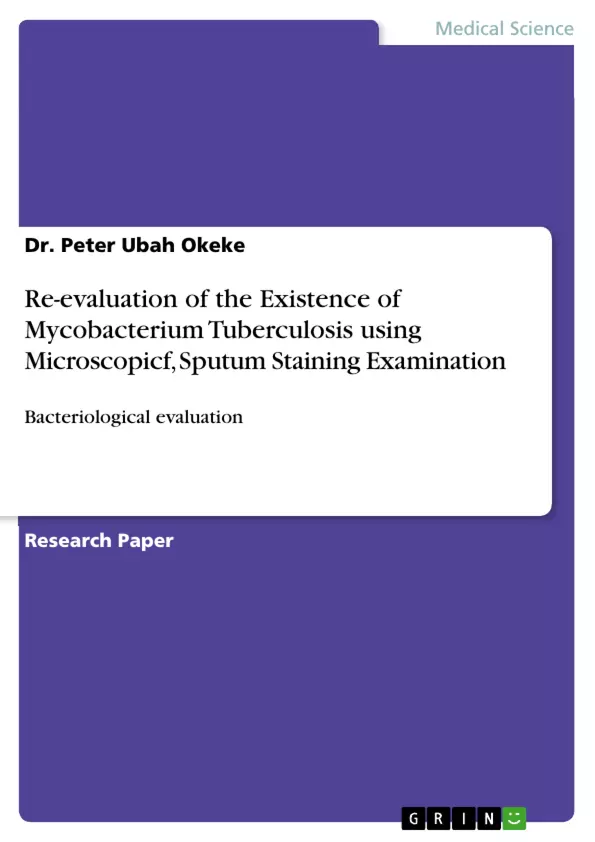A total of 256 sputum samples, were stained using Ziehl Neelsen method, in Medical Laboratory section of Hospital of Porto Novo, between 3rd of July, 2008 to 30th of April, 2012. A total of 16 (6.25%) of the samples were positive for mycobacterium tuberculosis, while 240 (93.75%) were negative. Males (n=131) showed higher infectivity 14 (10.68%) than females (n=125) that recorded 2 (1.6%).This research concluded that, free and appropriate treatment for all the infected persons, improving laboratory diagnostic facilities, and further research, to include, cultural and antigen detection assay were the areas that needed immediate attention.
Inhaltsverzeichnis (Table of Contents)
- Objective
- Limitations of the test
- Keywords
- Abstract
- Introduction
Zielsetzung und Themenschwerpunkte (Objectives and Key Themes)
This research aims to assess the prevalence of Mycobacterium tuberculosis (M.TB) infection in the province of Porto Novo, Cape Verde, using microscopic sputum staining examination. The research was limited by the unavailability of radiological, antigen detection, and bacteriological culture of sputum tests.
- Prevalence of M.TB infection in Porto Novo, Cape Verde
- Limitations of microscopic sputum staining examination
- Factors contributing to the resurgence of tuberculosis in developing countries
- The impact of co-infection with HIV on tuberculosis
- The need for improved laboratory diagnostic facilities and further research
Zusammenfassung der Kapitel (Chapter Summaries)
The study analyzed 256 sputum samples using the Ziehl Neelsen method between July 2008 and April 2012. The results indicated a 6.25% positivity rate for M.TB, with males showing a higher infection rate than females.
The introduction provides background information on the global burden of tuberculosis, highlighting the increasing incidence of the disease and its associated factors, including co-infection with HIV, multi-drug resistance, poverty, and overcrowding. It also describes the mechanism of M.TB infection and its progression.
Schlüsselwörter (Keywords)
The key terms and focus topics of this research include microscopy, AFB, Ziehl Neelsen staining, Mycobacterium tuberculosis, tuberculosis, prevalence, co-infection, HIV, multi-drug resistance, and laboratory diagnostics.
- Arbeit zitieren
- Dr. Peter Ubah Okeke (Autor:in), 2012, Re-evaluation of the Existence of Mycobacterium Tuberculosis using Microscopicf, Sputum Staining Examination, München, GRIN Verlag, https://www.grin.com/document/193857



